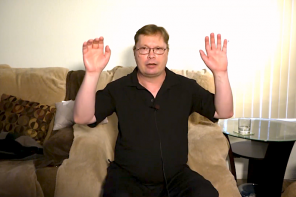Scholars of religion have been exploring the intersections between religion and popular culture for many years. This makes perfect sense, especially if one thinks about religion as defined not in terms of rigid doctrines, creeds, or churches, but rather as a matter of meaning-making, the attempt to respond to the overwhelming nature of life.
Religion writers have always found a lot to say about film, whether it’s about the obvious films, such as The Passion of the Christ, Jesus of Montreal, or The Ten Commandments, or about others that use the grammar and imagery of religious traditions in a more subtle framing of “ordinary” life. (Think, for instance, of a film like Cool Hand Luke which offers a full deck of religious themes, all played out behind prison walls.)
As for television, the offerings tend to skew toward caricature, even on shows that feature what one is encouraged to assume is an “insider” view of religion—particularly through those for whom religion serves as vocation or avocation—shows like Touched by an Angel, Highway to Heaven, and so on. In rare instances, the religious worldview served up for general consumption is not the Christian tradition—take for example Charmed, or the older and rather religiously vapid Bewitched.
More recently, network television has taken a stab at depicting Eastern religious sensibilities. What I have in mind is the show My Name Is Earl.
Fascination with the East, partly the result of disillusionment with aspects of US culture and values, is a decades-long trend in North America. Citizens on “Main Street” began, as early as the ’50s, to explore meditation and other practices; scholars provided reading material. The religious pluralism of the United States is in fact deep, thick, and complex. But this interest, at times referred to as “New Age,” has not necessarily translated well to the television screen. The short-lived television series Kung Fu left a lot to be desired, no? (Although, if one works hard enough, there may be something intriguing in the show related to the implied transcultural geography of inner struggle and “harmony” that brings together the Shaolin Monastery and the US West.)
My Name Is Earl, first airing in 2005, chronicles the adventures of Earl J. Hickey, a questionable character whose winning $100,000 in the lottery is quickly followed by an encounter with a car that puts him in the hospital. While there, he hears about karma and decides that he will use this principle to turn his life around. He puts together a long list of wrongs committed and begins the process of correcting for past, harmful behavior. The numerous awards won over four seasons suggest something of the show’s appeal. Earl, an unlikely convert to ethics of reconciliation, stumbles through various attempts to reconcile self-interest and the needs of others. The line between sacred and profane, “right” and “wrong,” is blurred. But capital remains central.
But what of the more complex arrangement that actually frames the notion of karma or “right action”? In the show, karma is plucked out of Buddhism: No mention of the “four noble truths” and the relationship between suffering and desire. Earl crosses things off his list, but what of the surrender of desire through the eight-fold path? Yes, there are ways in which the Americanization of Eastern philosophy and religiosity is signified during the show; but for the sake of laughs (and of course a continuing network commitment), the show doesn’t stray too far from a rather superficial take on religion and religious thought.
In fact, the solutions to life’s mishaps suggested on the show don’t seem radically different from those offered on “Leave It to Beaver.” That is, the basic assumptions concerning the proper construction of the “good” American life remain intact, unchallenged, just expanded so that even a socially marginal figure like “Earl” can get it “right” at times. Buddhism is commodified, truncated to a quick fix for past overindulgence, a method by which to pay back, to give folks “stuff.”
Perhaps I am making too much of this show, forcing it to do ethical heavy lifting beyond its own claims and capacities. It’s not a televised introduction to the study of religion, after all. Okay, I’ll be a bit sensitive here in that I actually think discussion of the show can foster space for much-needed introspection; self-reflection that isn’t devoid of religious importance. As theologian Paul Tillich remarks, “Religion is the substance of culture and culture is the form of religion.”
You may recall that post-9/11 discussion of the United States has been somewhat rigid. From shortly after the tragedy to the most recent presidential campaign, critique of US policies and practice has been all too often met with questions of patriotism and national loyalty. But this show, if extended beyond its immediate 30-minute airtime, projects a different posture: actions have consequences.
Perhaps the United States, like Earl, must examine its conduct, recognize the web-like nature of human interactions, and acknowledge at least the possibility that the United States as a nation has not lived up to the best of its democratic ideals, has not represented in its internal practices and foreign policies the commitment to freedom that fuels its rhetoric.
And, while we’re at it, we might throw into the mix some attention to our materialism and its awkward and distorting presentation. There is something useful in examining the policies and practices of our nation and demanding that we live the best of our ideals.
And, if My Name Is Earl sparks that type of exchange, I won’t complain. My name is Anthony.




